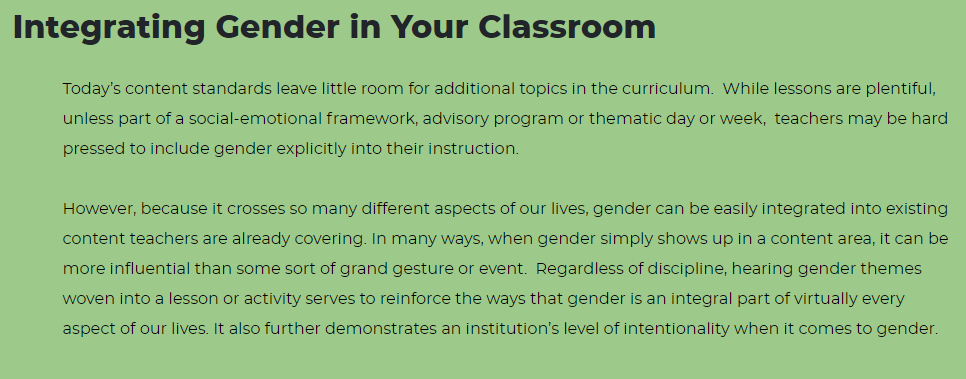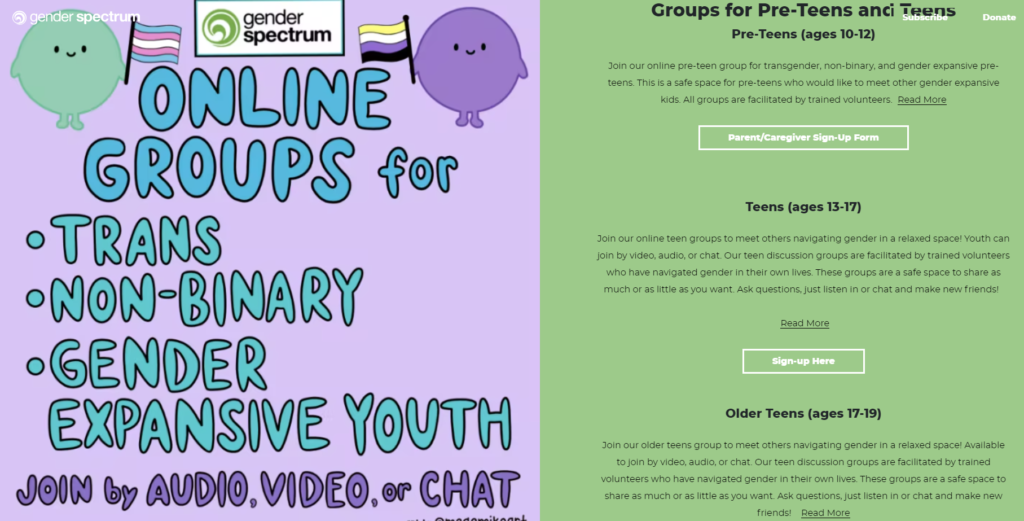
Eau Claire Area School District provides school staff with “Administrative Guidance” to support transgender students; appears to support students using “medical” and “surgical” procedures to transition to another gender
Incidents
- Issues
- Sex and Gender
Parents Defending Education previously received training material and videos that the Eau Claire Area School District provided to teachers. The training sessions included praise for mandatory teaching of LGBTQ topics starting in kindergarten and quizzes for teachers on the topics of “safe spaces” and “white privilege.” However, PDE has now additionally received a document intended for school district staff titled “Administrative Guidance for Gender Identity Support.” The document was originally acquired by a staff member of the school district and then provided to PDE by a concerned member of the community. This version of the document was updated in November 2021.
The document states that the purpose of the guidance is “to foster inclusive and welcoming environments that are free from discrimination, harassment, and bullying regardless of sex, sexual orientation, gender identity or gender expression” and “to facilitate compliance with district policy.” The document explains that a transgender person “is an individual that asserts a gender identity or gender expression at school or work that is different from the gender assigned at birth.”
The document then provides guidelines for school staff to follow, including their involvement in “student transition plans.” The school district appears to support the idea of using “medical” and “surgical” procedures to help students transition to another gender. The guidelines state:
- A transgender, non-binary, and/or gender-nonconforming student is encouraged to contact a staff member at the school to address any concerns, needs, or requests. This staff member will notify and work with the principal/designee. Parents/guardians of transgender, non-binary, and/or gender non-conforming students may also initiate contact with a staff member at school.
- When appropriate or necessary, the principal or designee will schedule a meeting to discuss the student’s needs and to develop a specific Student Gender Support Plan when appropriate to address these needs. Documentation shall include date, time, location, names, and titles of participants, as well as the following information. The plan shall address, as appropriate:
- The name and pronouns desired by the student (generally speaking, school staff and educators should inquire which terms a student may prefer and avoid terms that make the individual uncomfortable; a good general guideline is to employ those terms which the individual uses to describe themself).
- Restroom and locker room use.
- Participation in athletics and extracurricular activities.
- Student transition plans, if any. Each individual transitions differently (if they choose to transition at all), and transition can include social, medical, surgical, and/or legal processes.
- Other needs or requests of the student.
- Determination of a support plan coordinator when appropriate.
The document then explains that school staff should keep the gender identity of students a secret from parents because a student may not be “open” at home due to a “lack of acceptance.” The document states:
Some transgender, non-binary, and/or gender-nonconforming students are not “open” at home for reasons that may include safety concerns or lack of acceptance. School personnel should speak with the student first before discussing a student’s gender nonconformity or transgender status with the student’s parent/guardian.
The document further explains that students can use the “restrooms” and “locker rooms” that fit their chosen gender identity. If other students are uncomfortable with this, then they have to ask for permission to use a different facility, rather than the student who chose to change his/her gender identity. The document states:
Schools maintain separate restrooms and locker rooms for male and female students (i.e. sex assigned at birth). Access should be allowed based on the gender identity (i.e., man, woman, trans, non-binary, etc.) expressed by the student. Any student who is uncomfortable using a shared restroom or locker room regardless of the reason, shall upon request, be provided with an alternative. This may include, for example, addition of a privacy partition or curtain, use of a nearby private restroom or office, or a separate changing schedule. However, staff should not require a transgender or gender non-conforming student/employee to use a separate, nonintegrated space unless requested by the individual student.
The document states that “administrators and staff should respect the right of an individual to be addressed by a name and pronoun that corresponds to their gender identity.” The document then continues to state that a “court-ordered name or gender change is not required, and the student need not change their official records.” The document further states that acknowledgement from a medical professional is not required: “While medical documentation is not required, the school may request such documentation, if helpful, to develop an appropriate plan for the student.”
The school district will also change some school records to fit the chosen gender identity of students. The document explains that “to the extent that the district is not legally required to use a student’s legal/birth name and gender on other school records or documents, the school will use the name and gender preferred by the student.” The document uses “Student ID cards” as an example of what can be changed. The document then provides in-depth steps in how parents can change the legal names of students.
The document also explains that students can participate in “any intramural sports/extracurricular activities in a manner consistent with their gender identity consistently expressed at school.” The document further explains that “transgender students may be permitted to participate in interscholastic athletics consistent with the requirements and policies of the Wisconsin Interscholastic Athletics Association (WIAA).”
The document includes a link to another document titled the “Gender Support Plan” that school staff will use to support the chosen gender identity of students. The document explains once again that the gender identity of students will be kept a secret from parents: “If parents are not involved in creating this plan, and student states they do not want parents to know, it shall be made clear to the student that this plan is a student record and will be released to their parents when they request it.“
The “Gender Support Plan” asks the “Student’s Preferred Name,” “Student’s Gender,” and “Assigned Sex at Birth.” For changing student records, the document asks for the “Preferred Name,” “Pronouns,” “Restroom,” “Locker room,” and “School field trips (lodging for overnight trips).”
The school district also mentions the organization “Gender Spectrum” as a reference in the “Administrative Guidance” document. Gender Spectrum’s website offers resources specifically targeting “youth” and even teachers. Gender Spectrum offers resources to educators on a page titled “Integrating Gender Diversity Into Everyday Curriculum.” This page explains that the discussion of gender can be integrated into subjects like history, science, mathematics, and even physical education. In targeting the youth, Gender Spectrum offers online chatrooms for children as young as 10 years old who identify as “trans” or “non-binary.”


Stay Informed
